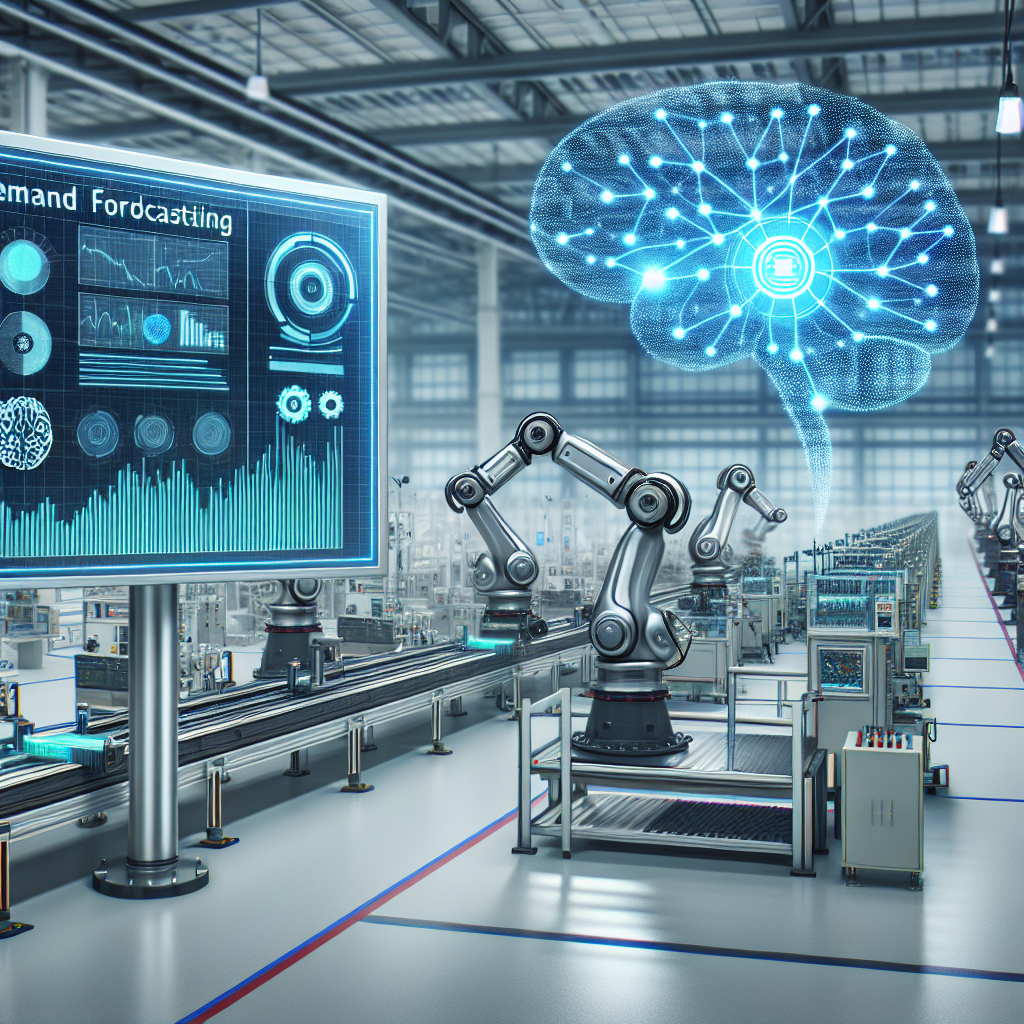The manufacturing industry is constantly evolving, with new technologies and advancements being introduced to improve efficiency and productivity. One such technology that has gained popularity in recent years is artificial intelligence (AI). AI is being used in various aspects of manufacturing, including demand forecasting.
Demand forecasting is a crucial process for manufacturing companies, as it helps them predict customer demand for their products and plan their production accordingly. Traditionally, demand forecasting has been done using historical data, market trends, and expert judgment. However, AI is changing the way demand forecasting is done by using advanced algorithms and machine learning techniques to analyze large volumes of data and make more accurate predictions.
There are several ways in which AI can be used for demand forecasting in manufacturing. One common approach is to use AI-powered demand forecasting software that can analyze historical sales data, market trends, and other relevant factors to predict future demand. These software tools can also take into account external factors such as economic conditions, competitor actions, and seasonality to provide more accurate forecasts.
Another way AI is being used for demand forecasting in manufacturing is through the use of predictive analytics. Predictive analytics involves using statistical algorithms and machine learning techniques to analyze data and make predictions about future events. In the context of demand forecasting, predictive analytics can be used to identify patterns and trends in sales data that can help manufacturers make more accurate forecasts.
AI can also be used to improve the accuracy of demand forecasts by incorporating real-time data into the forecasting process. For example, AI-powered demand forecasting systems can analyze data from sensors, IoT devices, and other sources to provide more up-to-date and accurate forecasts. This real-time data can help manufacturers respond quickly to changes in customer demand and market conditions.
Overall, the use of AI for demand forecasting in manufacturing can help companies improve their production planning, reduce inventory costs, and increase customer satisfaction. By leveraging the power of AI, manufacturers can make more informed decisions about production schedules, inventory levels, and supply chain management.
FAQs:
Q: How does AI improve demand forecasting in manufacturing?
A: AI improves demand forecasting in manufacturing by using advanced algorithms and machine learning techniques to analyze large volumes of data and make more accurate predictions. AI can also incorporate real-time data into the forecasting process, helping manufacturers respond quickly to changes in customer demand and market conditions.
Q: What are the benefits of using AI for demand forecasting in manufacturing?
A: The benefits of using AI for demand forecasting in manufacturing include improved accuracy in forecasting, better production planning, reduced inventory costs, and increased customer satisfaction. AI can help manufacturers make more informed decisions about production schedules, inventory levels, and supply chain management.
Q: What are some challenges of using AI for demand forecasting in manufacturing?
A: Some challenges of using AI for demand forecasting in manufacturing include the need for high-quality data, the complexity of AI algorithms, and the need for skilled data scientists and analysts. Additionally, integrating AI into existing systems and processes can be challenging for some manufacturers.
Q: How can companies implement AI for demand forecasting in manufacturing?
A: Companies can implement AI for demand forecasting in manufacturing by investing in AI-powered demand forecasting software, hiring skilled data scientists and analysts, and integrating AI into existing systems and processes. It is also important for companies to continuously monitor and evaluate the performance of AI systems to ensure they are providing accurate forecasts.

